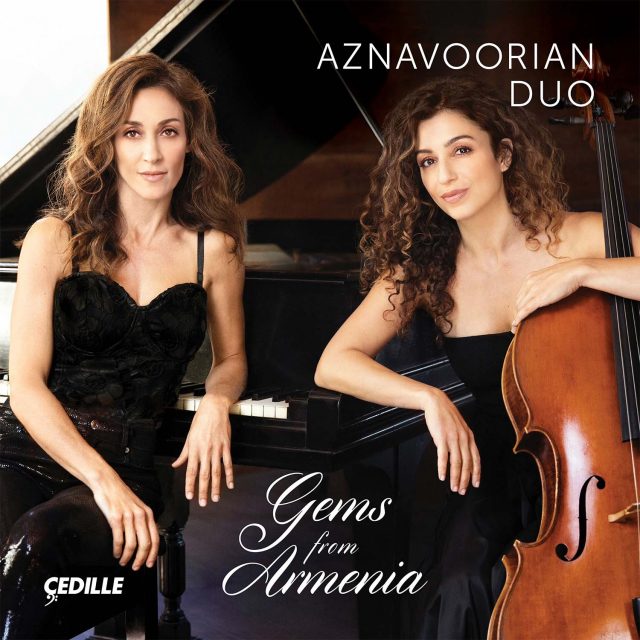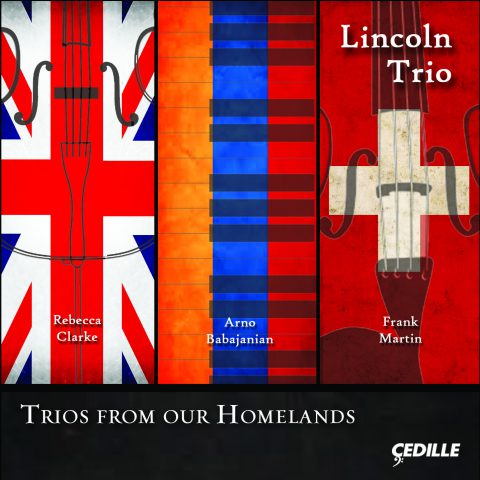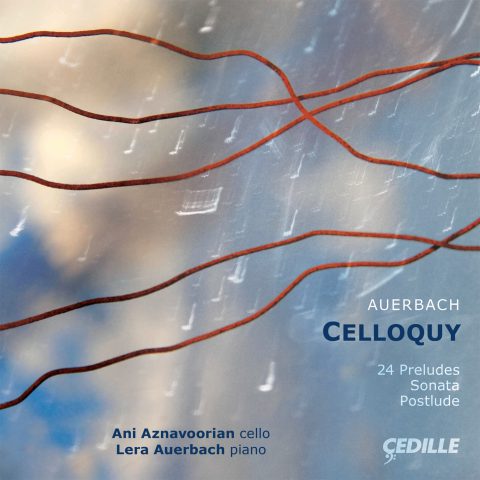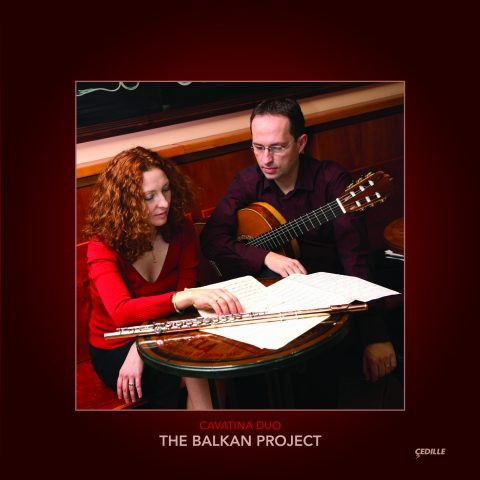Store

Cellist Ani Aznavoorian and pianist Marta Aznavoorian, each a renowned soloist and chamber musician in her own right, together celebrate the sounds of their ancestral homeland on Gems from Armenia. The album marks the Chicago-raised sisters’ recording debut as the Aznavoorian Duo.
Their panoramic survey of Armenian classical music opens with ancient folk songs arranged with haunting harmonies by early 20th-century Orthodox priest, composer, and musicologist Komitas Vardapet.
The Armenian musical renaissance of the Soviet era finds expression in Aram Khachaturian’s glorious ode to his hometown of Yerevan; Arno Babajanian’s impassioned tribute to his mentor Kachaturian; the early Sonata for Cello and Piano by Avet Terterian, whose admirers included Dmitri Shostakovich; and the Impromptu of Alexander Arutiunian, winner of many Soviet and Armenian musical honors and awards.
Contemporary voices include Serouj Kradjian, whose “Sari Siroun Yar” is an arrangement of an Armenian troubadour love song. Vache Sharafyan’s Petrified Dance is haunted by the memory of Armenian soldiers lost in recent battles. American Peter Boyer’s Mount Ararat, commissioned for this project and receiving its world-premiere recording, evokes the snow-capped twin peaks of biblical fame central to Armenian national and religious identity.
 Listen to Jim Ginsburg’s interview with
Listen to Jim Ginsburg’s interview with
Ani and Marta Aznavoorian
on Cedille’s Classical Chicago Podcast
Preview Excerpts
KOMITAS VARTABED (1869–1935)
ARAM KHACHATURIAN (1903–1978)
ARNO BABAJANIAN (1921–1983)
Aria & Dance
AVET TERTERIAN (1929–1994)
Sonata for cello and piano
SEROUJ KRADJIAN (b. 1973)
ALEXANDER ARUTIUNIAN (1920–2012)
VACHE SHARAFYAN (b. 1966)
PETER BOYER (b. 1970)
Artists
Program Notes
Download Album BookletGems From Armenia
Notes by Gary Peter Rejebian
A personal note from Ani & Marta Aznavoorian
It’s an odd feeling being completely connected to a culture, but never fully immersed in it. Our parents ensured that we grew up with traditional Armenian values and all the splendors of Armenian home cooking (thanks Mom!), but the desire to visit our homeland was difficult to suppress. We were thrilled finally to have the opportunity in 2017, when we were invited to perform our debut recital in the celebrated Khachaturian Hall in Yerevan.
Our preparations for the concert were intense, our excitement and expectations high. We wanted to give the best possible performance for the people of Armenia. Above all, we were most touched by the extensive efforts and measures they took to welcome and host two Armenian Americans into their beautiful country for the first time.
The idea for this CD sprung out of gratitude to the proud and soulful people of Armenia and our homage to the historical challenges they have overcome and continue to engage with.
As we recorded this poignant music, our thoughts turned to our grandfather, the first member of our Armenian family born in the United States. He was not a musician, but he was an integral part of our music education. These Armenian melodies would have evoked many memories and emotions for him, as his parents sacrificed so much to come to the United States and escape the ravages of World War I, all while preserving the Armenian soul and spirit that is present in the music we play here.
To the people of Armenia and to our “Dede,” we give this music and our love.
PROGRAM NOTES
Looming over the capital city of Yerevan, Armenia, Mount Ararat on some days seems so close you can reach out and touch its snow-capped peaks. This cloud-veiled mountain upon which Noah’s Ark came to rest in the Biblical story is such an iconic symbol of Armenia, as the first Christian nation, and its people that it is a prescribed feature in Armenian Orthodox altar paintings. Yet the mountain remains locked behind a hostile armed border that its historical owners cannot pass by land. Such a conflict, of having a piece of yourself in someone else’s possession, is emblematic of the history of the Armenian people and the intensity of emotion in the music with which they express their very soul.
Gems from Armenia voices a range of opposing emotions across three periods of time: some ringing clear in their own right, others but a whisper of other peaks and valleys in the Armenian story. Originally a people of the land who worshipped the sun before they adopted Christianity in 301AD, the Armenians have a storied history of tragedy and periods of triumph reflected in the breadth of this musical collection, as divergent as their agrarian roots and the thriving urban centers in which they’ve earned renown and respect as people of learned accomplishment and sharp mercantile acumen.
The album also speaks to a defining quality of Armenians, a people bridging cultures as the largest Christian minority in the Middle East. Just as one of their largest population centers, modern-day Istanbul, has one foot in Europe and the other in Asia, each grouping here is a bridge from one time period to the next.
The stories Gems from Armenia conveys begin with a collection of works by the revered composer Komitas Vartabed, an Armenian Orthodox priest who applied his advanced education in Western classical music to notating and arranging ancient Armenian folk songs. Komitas strove not merely to capture melodic tunes, but to evoke the very life and heartache of the people who passed down poetic lyrics in song over centuries as he documented them for the ages. He is known primarily for introducing lush modern harmonies to a traditionally melodic art form, incorporating independent harmonic voices built on the traditional modal form of Armenian music. His songs speak of a far-away lover personified as a tall plane tree (Chinar Es); an apricot tree that bears no harvest (Tsirani Tsar); a girl’s stolen veil (Al Ailux); of the crane (Kronk) as a personification of every Armenian refugee from the Ottoman Genocide of 1915–1922 longing for home; and even of a springtime snow (Garoun A) as the lamentation of a forsaken lover over his beloved’s heart turned cold.
The Soviet-era composers Aram Khachaturian, Arno Babajanian, Avet Terterian, and Alexander Arutunian collectively represent a musical renaissance for the Armenians; a period of greatness analogous to the first millennium “Golden Age” of the Armenian kingdom. The Soviet composers built on Komitas’s life’s work, carrying his melodies to soaring heights of grand orchestral composition to instill national pride at the political will of their governmental patrons.
Khachaturian’s glorious ode to his hometown (Yerevan) and Babajanian’s tribute to Khachaturian, his mentor (Elegy), speak with impassioned fondness in very different voices. In pre-Soviet days, Yerevan was a large village of mud huts. Developed into a city of majestic stone structures, Khachaturian’s thriving Yerevan bustles with grand melody and syncopated rhythmic flourishes. The piece is widely performed as a rousing emblem of Armenians’ pride in their capital and homeland.
Babajanian composed Elegy at the very end of his career, upon learning of Khachaturian’s death. He embraces the listener just like his dear old friend, with a sweetly sentimental and memorable melody that speaks as though he were raising a glass and delivering a toast — a deeply ingrained custom at Armenian gatherings. Indeed, Babajanian performed the piece literally as a musical toast at Khachaturian’s funeral.
Terterian’s Sonata, first performed in 1956, precedes the symphonies and stage works for which he is best known. He has been hailed for his musical ingenuity and the breadth of his prolific oeuvre spanning nearly every genre, including operas and motion picture scores. The overall tone is brooding and contemplative, and on the whole represents the transition from “Armenian” composition to Western masterworks composed by Armenians. The piece begins with a piano solo that gives way to an extended cello aria with an independent rhythmic line in the piano. The lyrical second movement is marked by luscious Armenian harmonies. After this, a lively finale repeats a series of rhythmic patterns between the two instruments. A sense of longing fills the final section before it builds to an energetic conclusion.
As a snapshot of his lively style inspired by memorable folk melodies, Alexander Arutunian composed his Impromptu in 1948, the same year that his graduation piece for the Moscow Conservatory, a cantata titled Motherland, bested Shostakovich to win the USSR’s Stalin Prize. With the piano setting the rhythmic tone for the duet, the cello sings a sweet folk melody enlivened with vigorous spiccato bowing and staccato piano chords. In its middle section, the piece shifts to soulful lamentation echoed by grand piano chords and a moment of lyrical repose that launches into a galloping finish by both instruments.
A third era, of contemporary music, is represented by Serouj Kradjian, Vache Sharafyan, and Peter Boyer.
Lebanese-born pianist and composer Kradjian arranged Sari Siroun Yar (Sweetheart of the Mountains) as a faithful retelling of the troubadour Ashod’s ballad about a mountaineer pining for his beautiful village love. Bringing her flowers on his black stallion, he arrives to find the door shut, and extols her graces as he leaves feeling greatly dejected and wishing for her return. Delicate broken chords and trills from the piano beneath the plaintive melody mimic the sounds of the oud (Middle Eastern mandolin) and the distinctive vernacular of Komitas’s compositions.
Kradjian writes:
One of the fondest memories I have of my childhood in war-torn Lebanon, where family gatherings were the most important activity, was singing together. The song that always received repeat performances was “Sari Siroun Yar.” . . . Years later, when I was arranging it, I realized how much it helped us all get through the traumatic experience of war and filled us with hope for a better tomorrow.
Sharafyan, a prolific composer of works including opera and ballet who hails from a musical family and was Tertarian’s student, composed his Petrified Dance through multiple iterations of string-piano combinations for Harutyun Khachatryan’s new documentary about Armenian street artist Vahan Ananyan. Sharafyan drew inspiration for the piece haunted by the memory of Armenian soldiers who had recently died in a month-long assault provoked by Azerbaijan while valiantly trying to retain recaptured homelands.
Boyer composed Mount Ararat for the Aznavoorian Duo specially for this project as a reflection of how Armenia’s biblical heritage resonated with a composer from a completely different background. A recipient of the Ellis Island Medal of Honor, Boyer’s Ellis Island: The Dream of America is one of the most performed American orchestral works of the last 15 years. He has also contributed orchestrations to a host of major Hollywood films.
The composer writes:
To those of Armenian heritage, Mount Ararat holds great significance as a symbol of Armenia. As Ani Aznavoorian has stated, “countless wars have been fought and lives lost over the land where the mountain lies.” Both that tragic history and impressions of the breathtaking mountain itself were in my mind while composing this music.
Boyer’s piece begins with deeply thoughtful tones, growing energetically as it unfolds with piano and cello trading rhythmic and harmonic phrases that reflect the historical conflicts of its namesake. Lilting piano arpeggios waft like the wind over the mountain, resolving with an echo of Komitas’s Krunk as the piece concludes, retelling an ancient tale in a modern voice and bringing the recording program around full circle.
Gary Peter Rejebian serves on the board of the Armenian General Benevolent Union/Chicago Center, and is cultural chair of the Evanston Taste of Armenia Festival hosted by St James Armenian Church.
Album Details
Producer James Ginsburg
Recording Engineer Bill Maylone
Steinway Piano Technician Ken Orgel
Recorded August 11–13, 2021 Reva and David Logan Center for the Arts at the University of Chicago
Publishers
Chinar Es © 1960 Yerevan: Hayethrat
Tsirani Tsar © 1960 Yerevan: Hayethrat
Garoun A © 1968 Yerevan: Hayethrat
Al Ailux ©1960 Yerevan: Hayethrat
Krunk© 1960 Yerevan: Hayethrat
Ivan Sings © 1948 G. Schirmer, Inc. (ASCAP)
Yerevan © 1948 G. Schirmer, Inc. (ASCAP)
Impromptu © 2017 Zen-On
Mt. Ararat © 2021 Propulsive Music (BMI)
Cover Photo Lisa Marie Mazzucco
Photo of Mount Ararat Marta Aznavoorian
Graphic Design Bark Design
© 2022 Cedille Records
CDR 90000 209



